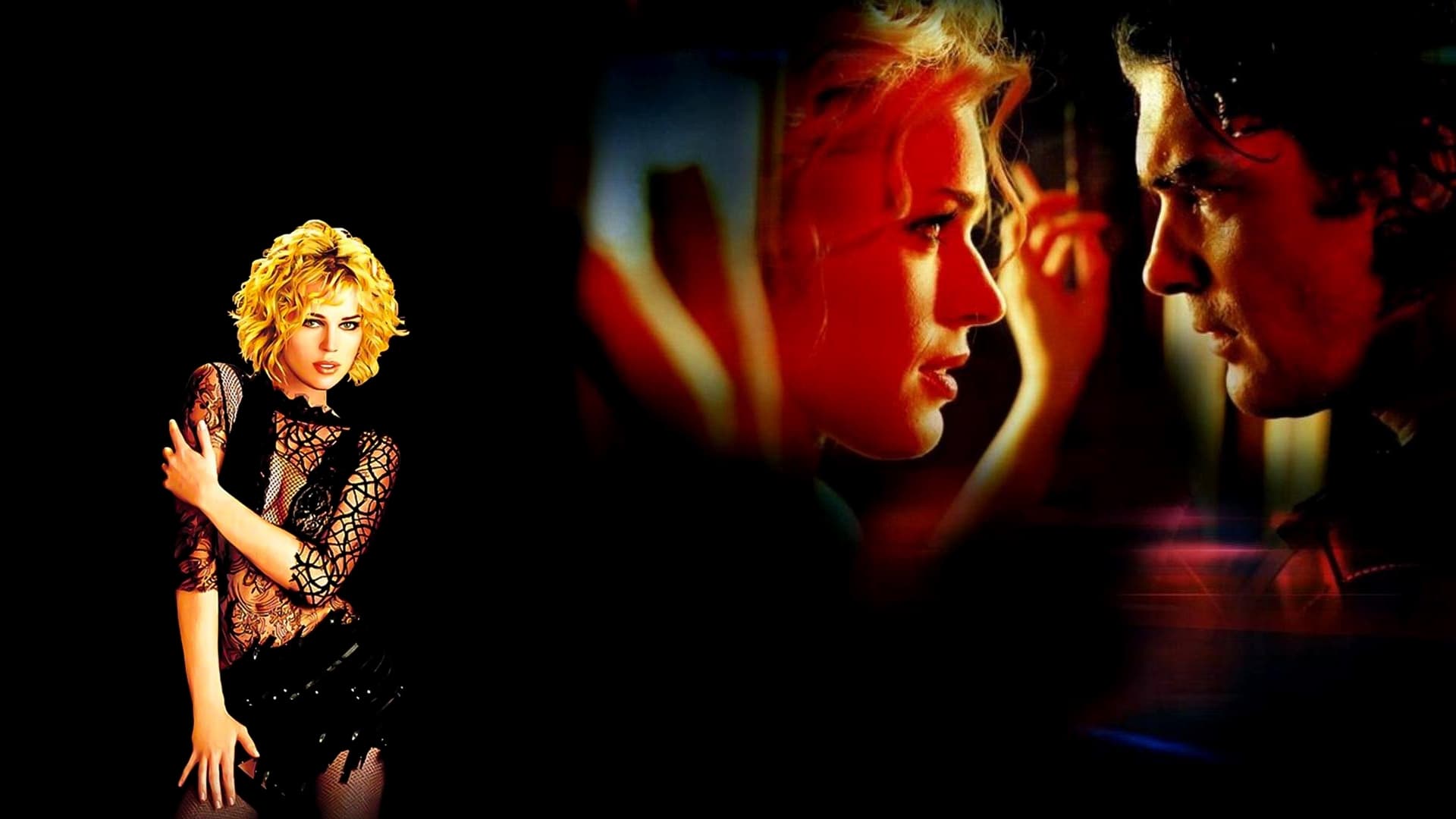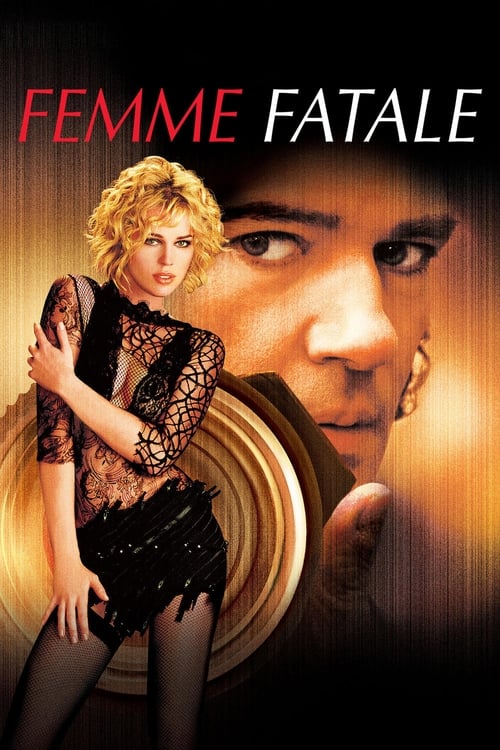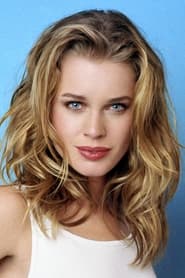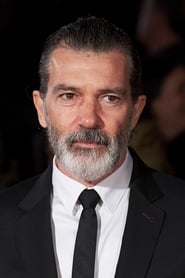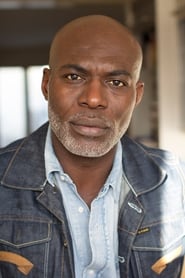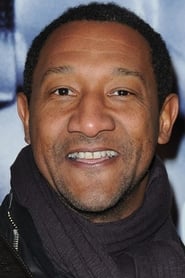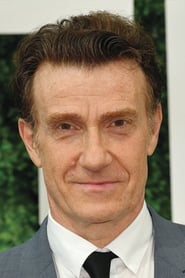Cast
View AllRebecca Romijn
as Laure Ash / Lily Watts
Antonio Banderas
as Nicolas Bardo
Peter Coyote
as Watts
Ériq Ebouaney
as Black Tie
Édouard Montoute
as Racine
Rie Rasmussen
as Veronica
Thierry Frémont
as Serra
Gregg Henry
as Shiff
Fiona Curzon
as Stanfield Phillips
Daniel Milgram
as Pierre / Bartender
Jean-Marc Minéo
as Seated Guard
Jean Chatel
as Cannes Commentator
Stéphane Petit
as Bodyguard One
Olivier Follet
as Bodyguard Two
Éva Darlan
as Irma
Crew
Director
- Brian De Palma
Writer
- Brian De Palma
Producer
- Tarak Ben Ammar
- Marina Gefter
Reviews
John Chard
Isn't sugar better than vinegar?
**SPOILER ALERT - The last paragraph makes reference to a 1940s film that constitutes a spoiler. **
There rarely seems to be anything in between where Brian De Palma films are concerned, cinematic lovers of all kinds by and large either trash or laud his films. Femme Fatale is no different, one critic - both professional or amateur - will have it as a 1/10 movie, another will have it at the maximum rate available. Femme Fatale is high grade stuff if one is either a De Palma fan or a lover of film noir. Conversely if these two things don't tick your film loving boxes then the law of averages suggests you should have - or should - stayed/stay away from it.
De Palma opens up the doors to his fun house and invites noir lovers to come on in and enjoy. It's difficult to write about the plot because it holds many twists and turns, it's a veritable supply of uppers and downers, twisters and benders, all sexed up and pumped full of De Palma's trademark tricks and devilish rug pulls. In truth the story and set-up is predictable, but the journey is what makes the pic ooze quality and bare faced cheek, with the director giggling away like a schoolgirl in the background.
Opening up with a sequence that sees our titular fatale (Rebecca Romijn-Stamos) watching famed noir classic Double Indemnity, De Palma proceeds to homage and love the film noir world. As he uses split-screens, canted angles, up-tilt shots, shadow plays etc, the narrative pulses with eroticism and impending cruelty, this really is a femme fatale based movie of the grandest kind. As events unfurl, with hapless photographer Nicola Bardo (a fun packed Antonio Banderas) caught in the web, Ryuichi Sakamoto's magnificent classical based score swirls around like some sort of peeping tom. The latter of which finds a shifty accomplice in Thierry Arbogast's noir photography.
It's a picture awash with dupes, dopes and vengeful criminals, where the themes of identity, duality, sexuality and distorted perceptions gnaw away at those investing fully in the viewing experience. Some critics (prof and amat) have lazily likened the film to David Lynch's Mulholland Drive, as if De Palma in 6 short months watched Lynch's movie and then knocked this film out! The copy-cat charge as funny as the rug-pull that De Palma pulls here. Besides, as any film noir lover will tell you, this has more in keeping with Fritz Lang's 1944 noirer "The Woman in the Window" than Lynch's film, which is no bad thing at all, and De Palma knew that. 8/10
Nov 8, 2015
JPV852
** Contains spoilers **
Lower tier movie from De Palma that has some good direction and acting was... okay, but the ending still never quite worked even after seeing this again (third time if I recall). The whole it was all a dream felt like a cheat. On the other hand, as mainstream erotic-thrillers go, it's worth a watch if you're interested in that subgenre, it's not a bad way to spend 2 hours. **3.0/5**
May 18, 2022
Thematic Analysis
Femme Fatale represents a fascinating example of Mystery/Crime/Thriller cinema, offering viewers a unique perspective on the human experience and societal structures. The film's approach to its themes demonstrates a creative vision that distinguishes it within its genre.
Director Brian De Palma brings their distinctive visual style to this film, continuing their exploration of themes seen in their previous works while adding new elements. Their approach to pacing and visual storytelling creates a viewing experience that rewards close attention.
Released in 2002, the film exists within a cultural context that continues to evolve with our understanding of its themes. Its reception demonstrates the diverse reactions to its artistic choices and its place in cinema history.
Did You Know?
- The production of Femme Fatale took approximately 14 months from pre-production to final cut.
- With a budget of $35.0 million, the film represented a significant investment in bringing this story to the screen.
- The final cut of the film runs for 114 minutes, though the director's initial assembly was reportedly 166 minutes long.
- Some visual effects sequences took up to 4 months to complete.
- The film contains approximately 2308 individual shots.
- The screenplay went through 11 major revisions before the final shooting script was approved.
Historical Context
- In 2002, when this film is released:
- Environmental concerns were becoming more mainstream.
- Digital technology was disrupting traditional media and entertainment.
- Digital filmmaking technologies were transforming production processes and creating new opportunities.
How This Film Stands Out
While Femme Fatale shares thematic elements with other films in its genre, it distinguishes itself through its unique approach to storytelling, visual style, and character development.
Unlike Dead Ringers, which focuses more on action than character development, Femme Fatale subverts genre expectations by exploring its themes with greater nuance.
While films like The Hitcher and FearDotCom explore similar territory, Femme Fatale stands apart through its distinctive directorial vision and pacing.
This film's unique contribution to cinema lies in its bold artistic choices and willingness to challenge viewer expectations, making it a valuable addition to its genre.
Details
- Release Date: April 30, 2002
- Runtime: 1h 54m
- Budget: $35,000,000
- Revenue: $16,800,000

